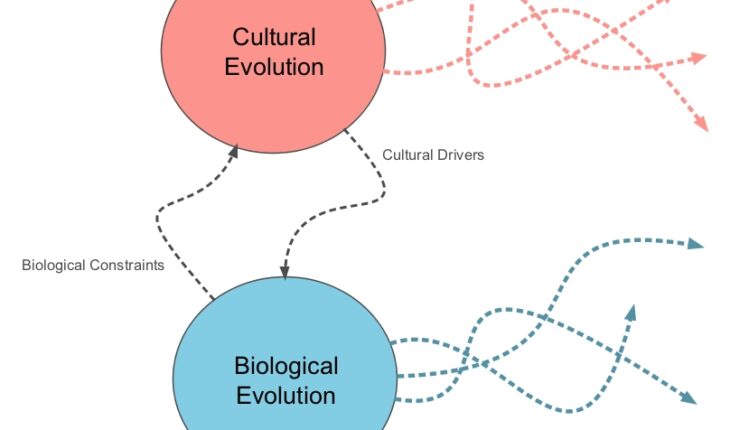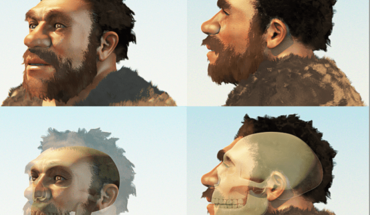By: Farzin Espahani
Introduction
The concept of cultural evolution offers a compelling framework for understanding how human societies develop, adapt, and transmit knowledge across generations. Unlike genetic evolution, which operates through natural selection over long periods, cultural evolution occurs through learned behaviors, traditions, and institutions that shape human civilization.
Robert Boyd and Peter Richerson have been at the forefront of formalizing cultural evolution as a scientific discipline, integrating insights from anthropology, evolutionary biology, and cognitive science. Their work has provided a robust theoretical model for understanding how culture evolves, why it persists, and how it interacts with genetic evolution.
This article explores the history of cultural evolution, the contributions of Boyd and Richerson, and the broader implications of their work for understanding human societies. By examining cultural evolution through a biocultural anthropological lens, we can appreciate how both genetic and cultural factors shape human development.
The Historical Foundations of Cultural Evolution
Early Theories of Cultural Change
The idea that human culture evolves is not new. Thinkers from various disciplines have long speculated about the mechanisms behind cultural change and transmission.
- 19th Century Evolutionary Theories: Inspired by Charles Darwin’s On the Origin of Species (1859), early anthropologists such as Lewis Henry Morgan and Edward Burnett Tylor proposed unilinear models of cultural evolution. They argued that all societies progress through stages from “savagery” to “civilization,” though these perspectives have since been criticized for their ethnocentric bias.
- Diffusionism (Early 20th Century): This approach emphasized that cultural traits spread from a few innovation centers rather than independently evolving in multiple locations.
- Functionalism (Mid-20th Century): Anthropologists like Bronisław Malinowski and A.R. Radcliffe-Brown focused on how cultural practices serve social needs rather than their evolutionary origins.
While these early theories provided useful insights, they lacked a rigorous mathematical and evolutionary framework to explain cultural change systematically. This gap paved the way for modern cultural evolution theories.
The Birth of Cultural Evolutionary Theory
In the mid-to-late 20th century, scholars began developing more formalized theories of cultural evolution. A key turning point came in the 1970s and 1980s with the work of Robert Boyd and Peter Richerson, who applied population genetics models to cultural transmission. Their approach was revolutionary because it treated culture as a system subject to evolutionary forces similar to genetic inheritance, but with its own unique dynamics.
Boyd and Richerson’s Contributions to Cultural Evolution
Culture as an Evolutionary System
Boyd and Richerson argued that culture—defined as socially transmitted information—functions as an inheritance system analogous to genetic inheritance. However, cultural evolution differs from biological evolution in several ways:
- Faster Transmission: Unlike genes, which pass only from parent to offspring, cultural information can spread rapidly through social learning.
- Multiple Modes of Transmission: Culture can be transmitted vertically (parent to child), horizontally (peer to peer), or obliquely (from non-parental elders to younger generations).
- Non-Genetic Adaptation: Culture allows humans to adapt to environmental changes without waiting for genetic mutations, giving societies a flexible and responsive mechanism for survival.
Mechanisms of Cultural Evolution
Boyd and Richerson introduced several key mechanisms that drive cultural evolution:
- Biased Transmission: Individuals selectively adopt cultural traits based on prestige, success, or perceived utility. For example, people are more likely to imitate high-status individuals or experts in a given field.
- Conformist Bias: A tendency to adopt the behaviors and beliefs of the majority in a given society, ensuring group cohesion and stability.
- Cultural Drift: Like genetic drift, cultural traits can spread randomly due to chance rather than selective advantage.
- Cultural Selection: Certain cultural traits become dominant because they enhance survival, reproduction, or social cooperation.
Gene-Culture Coevolution
One of the most influential aspects of Boyd and Richerson’s work is their model of gene-culture coevolution—the idea that genetic and cultural evolution influence each other over time.
For instance:
- Lactase Persistence: The ability of some human populations to digest lactose into adulthood evolved in response to dairy farming, a cultural innovation.
- Cooperation and Social Norms: Cultural norms that favor cooperation, such as punishment for cheaters, reinforce genetic predispositions for prosocial behavior.
- Language Evolution: The human brain has evolved structures that facilitate language acquisition, but the diversity of languages is shaped by cultural transmission.
This coevolutionary perspective challenges the notion that genetic and cultural evolution are separate processes. Instead, they interact dynamically, shaping human development in complex ways.
Implications of Cultural Evolution
Understanding Human Societies
Cultural evolution provides a powerful tool for understanding why societies develop different customs, political systems, and technologies. By studying how cultural traits spread and persist, researchers can explain phenomena such as:
- Religious Beliefs: Why some religions spread more successfully than others.
- Technological Progress: How innovations, such as agriculture or the internet, revolutionize societies.
- Social Norms: Why certain behaviors, such as monogamy or democracy, become widespread in some cultures but not others.
Application to Public Policy and Social Change
Recognizing that culture evolves helps policymakers design more effective interventions for social issues such as public health, education, and sustainability. For example:
- Vaccination Campaigns: Understanding how cultural biases influence vaccine acceptance can improve public health strategies.
- Climate Change Action: Cultural evolution explains why some societies adopt eco-friendly practices more readily than others.
- Economic Development: Cultural factors influence entrepreneurship, innovation, and economic systems.
Challenges in the Modern World
As globalization accelerates cultural exchange, it raises questions about how cultural evolution operates in the modern era. Key challenges include:
- Information Overload: The internet and social media have dramatically increased the speed of cultural transmission, leading to rapid changes in norms and behaviors.
- Cultural Homogenization vs. Diversity: While globalization spreads certain cultural traits worldwide, it also threatens indigenous languages and traditions.
- Misinformation and Memetics: The spread of misinformation online demonstrates how cultural evolution can be influenced by maladaptive traits.
Future Directions in Cultural Evolution
Boyd and Richerson’s work continues to influence research across disciplines, from anthropology to artificial intelligence. Some emerging areas of study include:
- Digital Culture: How memes, viral content, and AI influence cultural transmission.
- Cooperation in Large Societies: Understanding how large-scale cooperation evolves in complex societies.
- Interdisciplinary Approaches: Integrating cultural evolution with neuroscience, psychology, and sociology to create a more comprehensive model of human behavior.
Conclusion
Cultural evolution, as conceptualized by Robert Boyd and Peter Richerson, provides a robust framework for understanding how human societies change over time. By recognizing that culture is an evolutionary process influenced by biases, selection pressures, and gene-culture interactions, we gain deeper insights into the forces that shape human behavior.
From explaining ancient traditions to tackling contemporary global challenges, cultural evolution offers a unifying perspective that bridges biology and anthropology. As research continues, this field will undoubtedly play a crucial role in shaping our understanding of human nature, society, and the future of cultural adaptation.
Key Citations on Cultural Evolution:
- Boyd, R., & Richerson, P. J. (1985). Culture and the Evolutionary Process. University of Chicago Press.
- This book is one of the foundational works in cultural evolution, explaining how culture evolves similarly to genetic evolution, using concepts of social learning and transmission.
- Boyd, R., & Richerson, P. J. (2005). The Origin and Evolution of Cultures. Oxford University Press.
- A collection of key papers that develop their ideas on how cultural transmission shapes human evolution.
- Richerson, P. J., & Boyd, R. (2005). Not by Genes Alone: How Culture Transformed Human Evolution. University of Chicago Press.
- This book expands on their earlier work and argues for the co-evolution of genes and culture, emphasizing how cultural inheritance plays a central role in human adaptation.
- Henrich, J. (2015). The Secret of Our Success: How Culture Is Driving Human Evolution, Domesticating Our Species, and Making Us Smarter. Princeton University Press.
- Henrich builds on Boyd and Richerson’s ideas, showing how human intelligence and cooperation are largely shaped by cultural learning.
- Mesoudi, A. (2011). Cultural Evolution: How Darwinian Theory Can Explain Human Culture and Synthesize the Social Sciences. University of Chicago Press.
- A comprehensive introduction to cultural evolution that ties together work from anthropology, psychology, and biology.
- Cavalli-Sforza, L. L., & Feldman, M. W. (1981). Cultural Transmission and Evolution: A Quantitative Approach. Princeton University Press.
- One of the earliest mathematical models of cultural transmission, showing how culture can evolve alongside genetic evolution.
- Laland, K. N. (2017). Darwin’s Unfinished Symphony: How Culture Made the Human Mind. Princeton University Press.
- Discusses how cumulative cultural evolution led to the development of human cognition.
- Tomasello, M. (1999). The Cultural Origins of Human Cognition. Harvard University Press.
- Explores how cultural learning, particularly imitation, scaffolds the development of human intelligence.
Academic Papers:
- Boyd, R., & Richerson, P. J. (2009). Culture and the evolution of human cooperation. Philosophical Transactions of the Royal Society B: Biological Sciences, 364(1533), 3281-3288.
- Examines the role of cultural evolution in large-scale human cooperation.
- Richerson, P., Boyd, R., & Henrich, J. (2010). Gene-culture coevolution in the age of genomics. Proceedings of the National Academy of Sciences, 107(2), 8985-8992.




